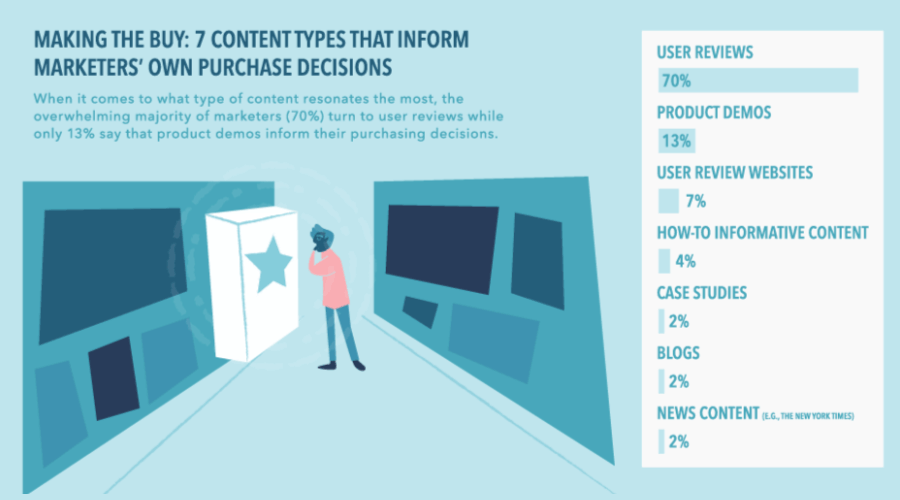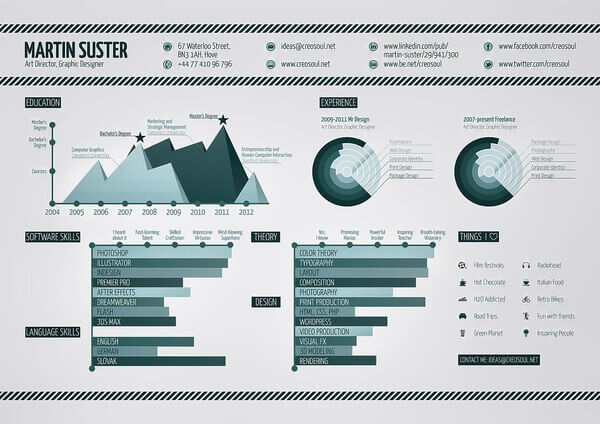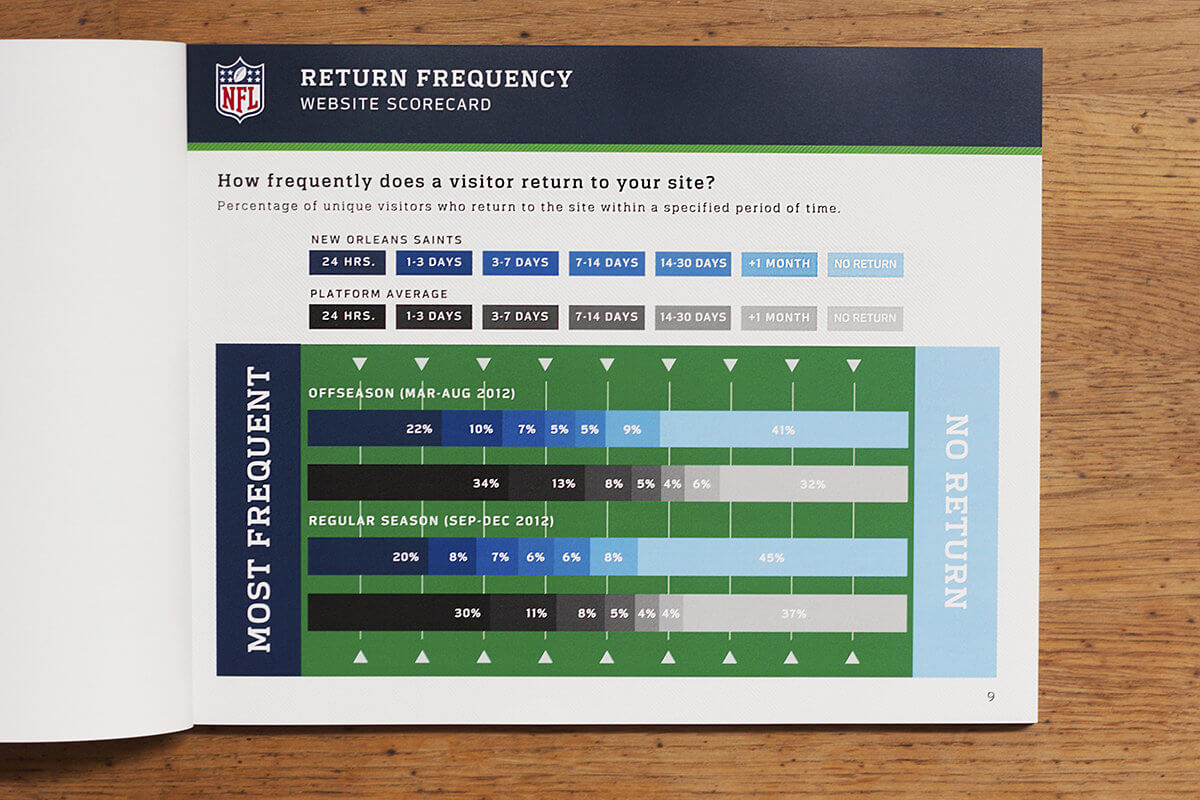When you hear the word “infographic,” you probably think of the classic marketing infographic: bright and colorful, with a catchy headline and a company logo. But infographics have come so far in the last 10 years. (We know; we’ve been making them that long.) Where the art form was once restricted to content marketers, it’s opened up to all sorts of applications: educators, publishers, and even job seekers have tapped into the value of visualization, turning anything and everything into an infographic. This tactic is not only effective; it’s smart. Turning somewhat dull or dry information into cool infographics makes you stand out, helps your audience synthesize content, and gives you a leg up.

7 Types of Content to Turn Into Cool Infographics
This is especially exciting for brands. Even the driest content in your organization (think reports) can benefit from the infographic treatment, helping you create more engaging content at every touchpoint. If you want to try something different, here are 7 types of content you can turn into an interesting, impactful infographic.
1) Press Release
Time and energy are precious to everyone, especially for journalists, who are flooded with pitches. According to a 2014 AdWeek study, the average journalist receives 50 pitches a week—and spends less than 1 minute reading each pitch release. Hence, the days of the page-long release are long gone; 68% of journalists say they “just want the facts,” which is why infographics can be so effective.
If you’re trying to pitch an interesting story supported by data (another thing they love), showing them the data in a few quick visuals can make a grand impact. (This is also why designing infographics in panels, which can be extracted for press releases, is also helpful.)
Example: We collaborated with Newscred to help turn their survey of content marketers into an animated graphic. Its modular design made it easy to pull out sections to entice different types of people.

2) Tutorials
There are many ways to teach people to do something, but making it visual is probably the easiest. If there are tips or tutorials that your brand often delivers, turning them into cool infographics can be a useful way to deliver the information efficiently—by showing instead of telling—and with personality.
Example: We partnered with LinkedIn to create an infographic that shows publishers how to maintain the right mix of content, breaking down what to publish each day.

3) Recipes
We’ve seen more and more infographics showing up in cookbooks (or entire cookbooks made from infographics)—and for good reason. Visualizing a recipe (not just the process but the actual ingredients) is a clean and simple way to communicate the information. Even better, you don’t have to keep flipping pages back and forth, searching for ingredient breakdowns or forgetting what step comes next.
Example: This is one of our favorite cool infographics to date. In anticipation of the Kentucky Derby, we visualized many different ways to put a twist on a Mint Julep (the iconic drink of the Derby).

4) Resumés
It isn’t easy to stand out from the crowd while on the job hunt, but a visual resumé (especially for anyone pursuing employment in the visual or design field) can be a genius way to do it. It puts the highlights front and center, saving any HR person valuable time. It shows off your creativity, and it makes you hard to forget.
Example: This infographic resumé from graphic designer Martin Suster is a visual treat.

5) Sales Brochures
Your sales team needs to communicate quickly and efficiently to 1) form relationships with prospects and 2) close the deal. Much of that task is giving people the info they need to make that decision. While there is a difference between marketing material and sales material, and infographics are traditionally considered a content marketing tool, they can be well used to deliver any and all types of sales info. Think product spec sheets, demos, etc.
Example: This infographic for Windows details the specific ways that Windows Apps can be used to enhance consumers’ lives.

6) Presentations
There’s a reason the word “PowerPoint” makes you want to fall asleep. Droll presentations and endless bulletpoints are crazymaking for everyone. But presentations—especially those that rely on or are supported by data—can really be brought to life when they get the infographic treatment. Not only do well-designed visualizations engage the viewer in real life but a presentation can become a standalone piece of content.
Example: We turned a presentation on our top 10 tips for a brainstorm into a SlideShare that remains one of our most viewed pieces of content on the site.
7) Reports
When you’re trying to make a point, state your case, or convince higher-ups, you need to give them the overview in an instant. Giving regular client or internal reporting the infographic treatment is a great way to do this. Reports are also particularly primed for this, as they generally are used to communicate data insights.
Example: We partnered with the NFL to produce print reports featuring data and analytics for each team’s web performance. Each report featured data visualizations and infographics, presented in a visually engaging way for easy reference.

Always Keep an Eye Out
Many things can get the infographic treatment. Ideally, you want it to have data, but diagrams, processes, tutorials, or product rundowns can equally benefit from visualizations. To identify ways to best put infographics to use, consider what content or information you or your team has to deliver regularly. Do you end up giving the same spiel to accompany your product demos? Throwing out data points during your sales presentations? A visual aid may save the day in these cases.
For more tips on creating better infographics, here’s some more stuff you might like:
- Try these 16 ways to come up with great infographic ideas.
- Find out how to fix the 15 most common infographic design mistakes.
- Get our best tips for making great infographics (based on the 4,000 we’ve made).
- See 9 infographic design examples that will leave you inspired.
If you still need a little help with your infographic, we’d love to work together.





